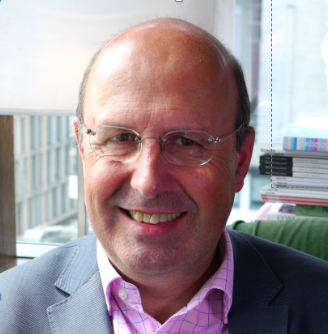You can sign up to our LinkedIn newsletter here.
I am talking to more and more people who are attracted to the idea of the Portfolio Executive workstyle and are keen to develop a different approach to their Second Half Career. But often they feel quite confused about being an Independent Consultant versus being a Portfolio Executive. But the reality is there’s a very big difference between being an Independent Consultant and a Portfolio Executive.
Independent Consultant
As an Independent Consultant, you are someone who has a kit bag of possible client problems. You find a client with a problem in your kitbag and do a project to fix it. As a marketing expert, you might identify there is no marketing strategy or marketing metrics or inadequate marketing channels or a product badly positioned in a market. As an Independent Consultant your whole mindset is ‘problem: find, fix; problem: find, fix’.
The challenge for you as an Independent Consultant is to constantly find the next problem and constantly find the next client. You know once the problem is fixed your current engagement is over. You will struggle to sustain long term client relationships because you probably don’t have enough problems in your kit bag or range of deep expertise to solve a wide variety of different problems.
Often, as an Independent Consultant, you end up becoming an associate of larger consulting companies. Gone is the independence. You rely on other people for your work. Even if you are an associate for several consultancies. you may only have one or two who will consistently give you work. The consulting company is probably marking up what they pay you by up to 100%. If you are being charged to their client at £1,000 a day, then the consultancy will only want to pay you between £450-£650 a day. If you are only billable for half of the 240 working days per year (48 weeks @ 5 days a week) then £500 a day translates to £60,000 p.a before tax, pension, insurance, sickness and business overheads. You will probably be expected to work unpaid building relationships in the consultancy to demonstrate you are a ‘team player’, support proposal writing and pitch to clients. If you have a very, very narrow specialist niche in high demand, maybe you can make your life work and retain your independence for a season. But, over time, other people enter your niche, and it becomes increasingly difficult for you to demonstrate a high value expertise.
The Portfolio Executive workstyle difference.
The essential difference is mindset. You shift from ‘problem: find, fix’ to being a part-time Head or Director of a function in a client’s business. Your role is to make sure that the capability of that function is fit for purpose as the business develops. You’re not there to ‘problem: find, fix’ but to build a long-term capability in that business, until the business is large enough that you can appoint a full-time replacement. Now you have an opportunity to become a non-executive director in the business. A lot of what you are doing is making sure that the capability is properly integrated with the other business functions. For example, if you’re the Marketing Director, your marketing function should be integrated with the sales function, service function, product development function and aligned to the strategy of the board. You need to be part of senior leadership team sitting as peer with the executive board. The CEO will see you as a trusted independent advisor and a team player.
Long term relationships
Now that you have responsibility for developing a capability the client looks for a long-term relationship. When you start you may do four or five days a month to steady the ship and to get essentials in place. You should then start to drop down to two or three days a month, only picking up the pace for a significant transition that requires extra attention. As a Marketing Director for example this might be a big project to completely renew the website and integrate it with ecommerce. For a season you’ll do a bit more to make sure it is successful. The principle is to manage your time down to about two or three days a month as you build the team that the business needs. As this is a long-term relationship, you can anticipate that your relationships with a client will average five years. If you have 5 clients where you work for two or three days a month each then 12 days a month at £1,000 a day, 12 months a year gives you an income of £140,000+.
The joy of is that you only need to find one new client on average per year. Compare this to an Independent Consultant where you might need to find one new client on average every 6-8 weeks. This is a very significant shift. You spend more time serving your clients, less time winning work and you free yourself up to do other things that are important to you.
Freedom when you are fee earning just 12 days per month
What would you do with those other eight or nine days a month? Sure, some of it you need to invest in building your business. But you could also be doing something very different. Develop that side hustle you’ve always hankered after; spend more time with members of your family. Perhaps you are a member of the sandwich generation: you still have responsibilities for your children, and you have elderly parents. You might even want to spend more time with your grandchildren. You can become a trustee of a charity, a governor of a school, a magistrate on the bench or a mentor to a set of start-ups. How about more time sailing or stepping up from regular Park Runs to marathons, triathlon and Iron Man challenges? I chose to become a Visiting Professor at University College London, trustee of a social impact business network and interim general manager of a historic house and a 70-acre country estate. There is a whole range of different things that you can use this extra time for.
Conclusions
Sadly, the Independent Consultants I talk to don’t have freedom of their time, do work they don’t enjoy, often don’t have the income that they are hoping for, and often struggle to get day rates they deserve.
Consider the two options: Independent Consultant or Portfolio Executive. Maybe you will start with one and migrate to the other. I am convinced that in the long term a Portfolio Executive workstyle with a portfolio of clients you love and as a trusted advisor to a CEO you believe in, has the greatest potential to offer freedom, joy and the sustainable rewards you deserve.

Charles McLachlan is the founder of FuturePerfect and on a mission to transform the future of work and business. The Portfolio Executive programme is a new initiative to help executives build a sustainable and impactful second-half-career. Creating an alternative future takes imagination, design, organisation and many other thinking skills. Charles is happy to lend them to you.
